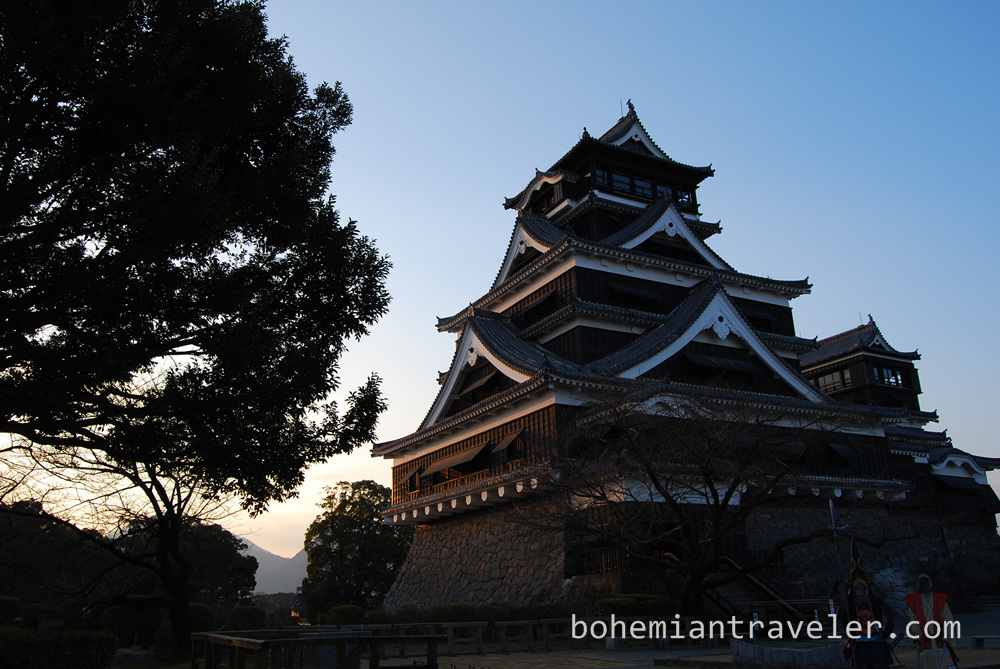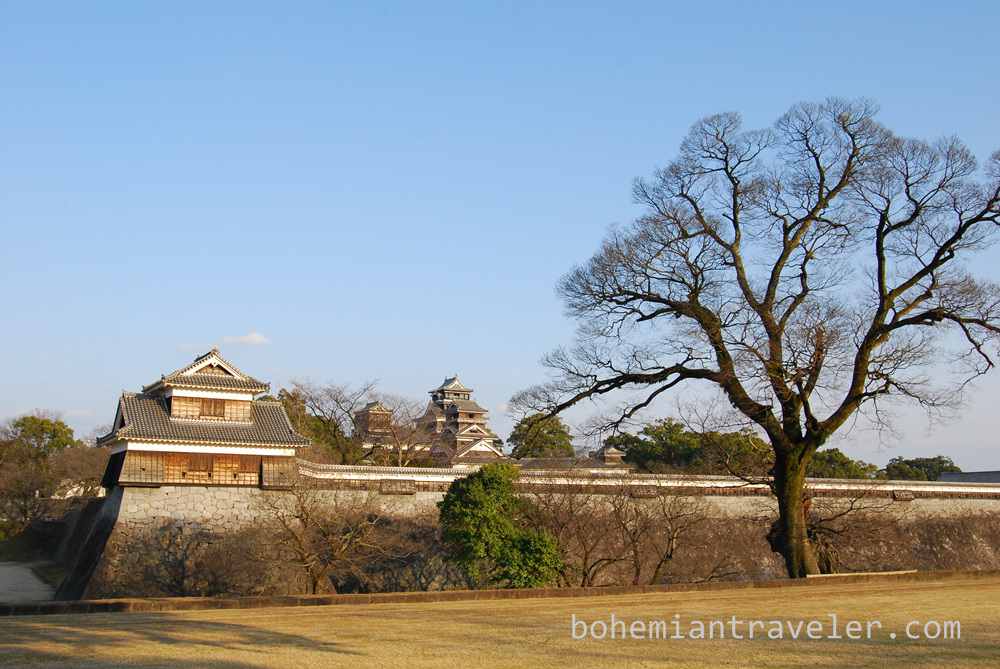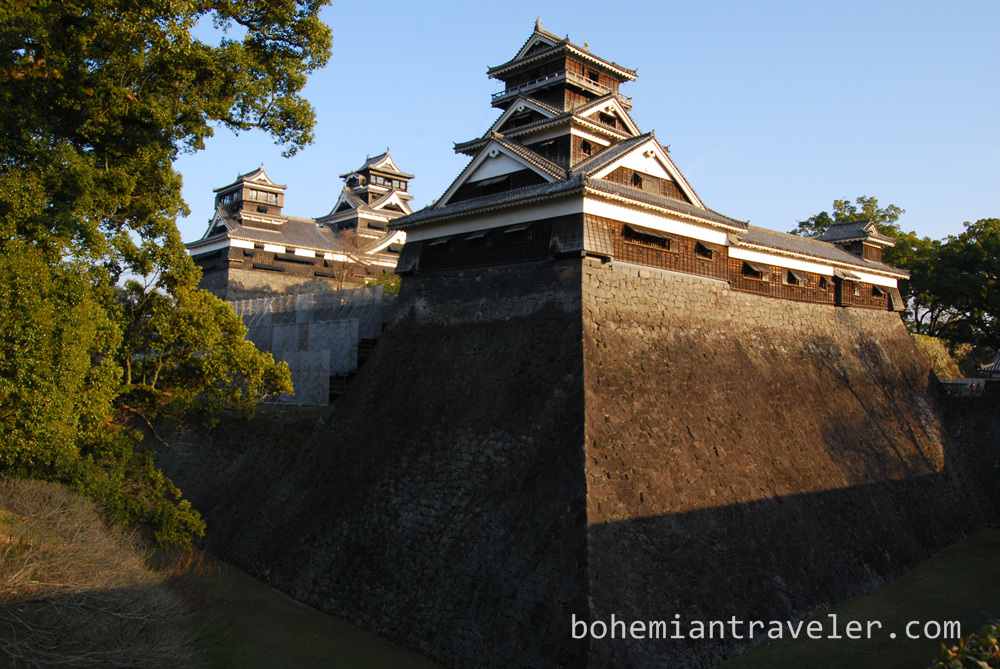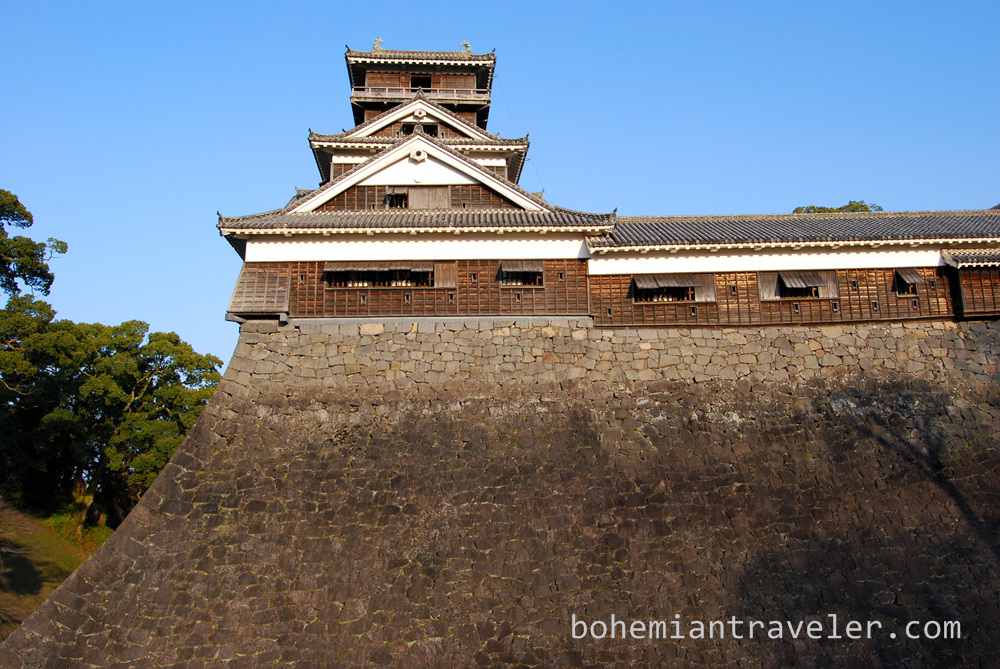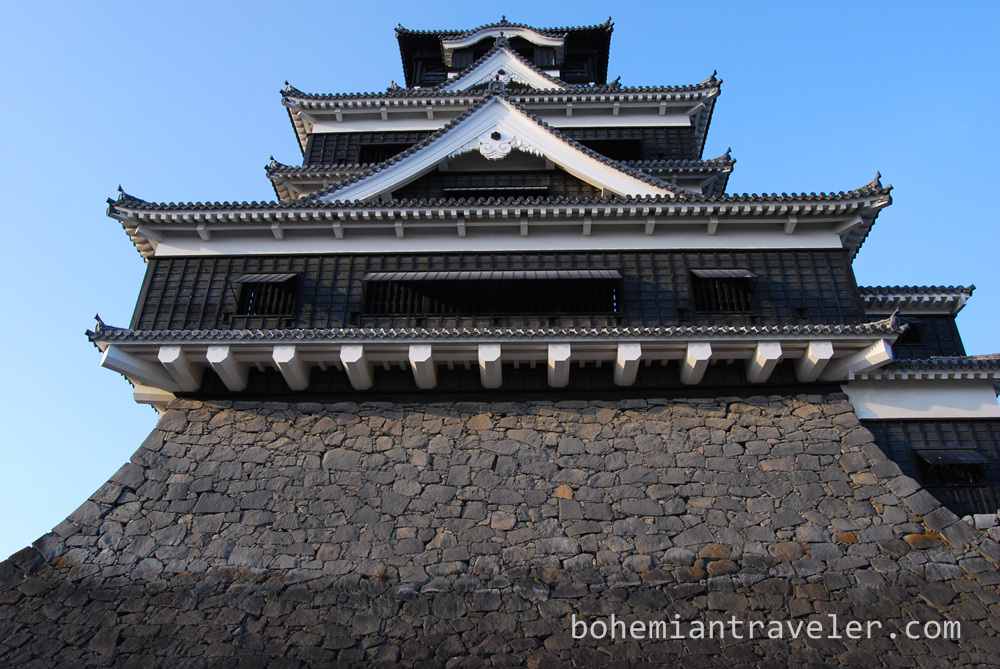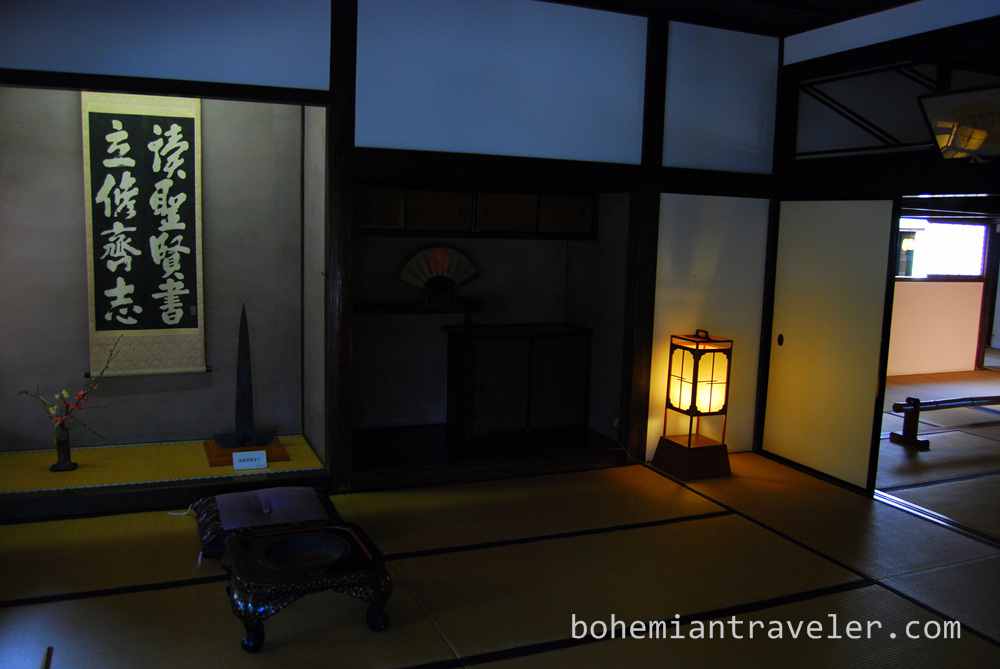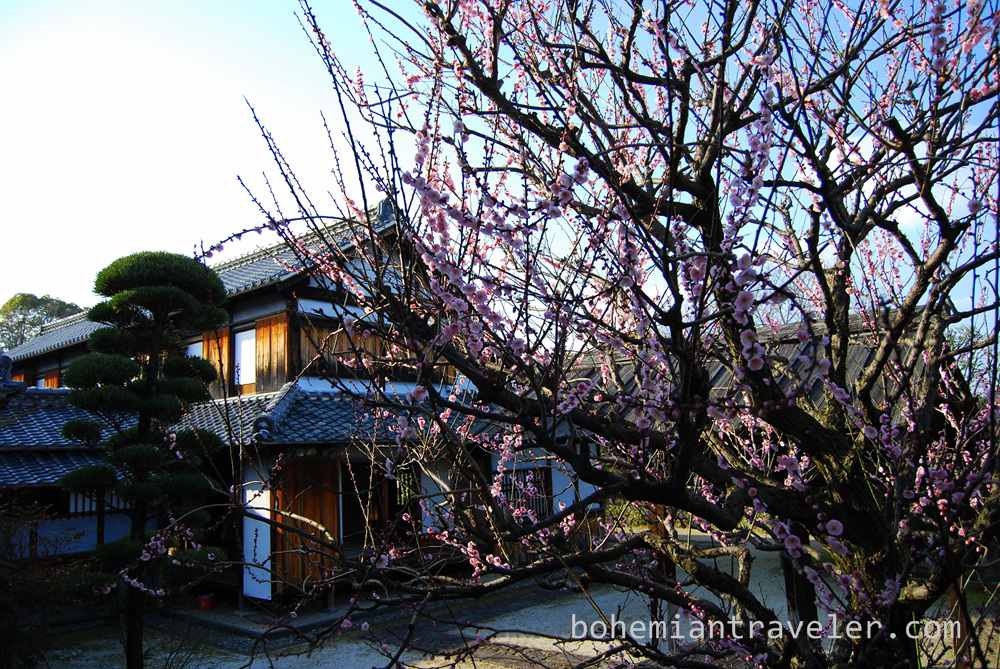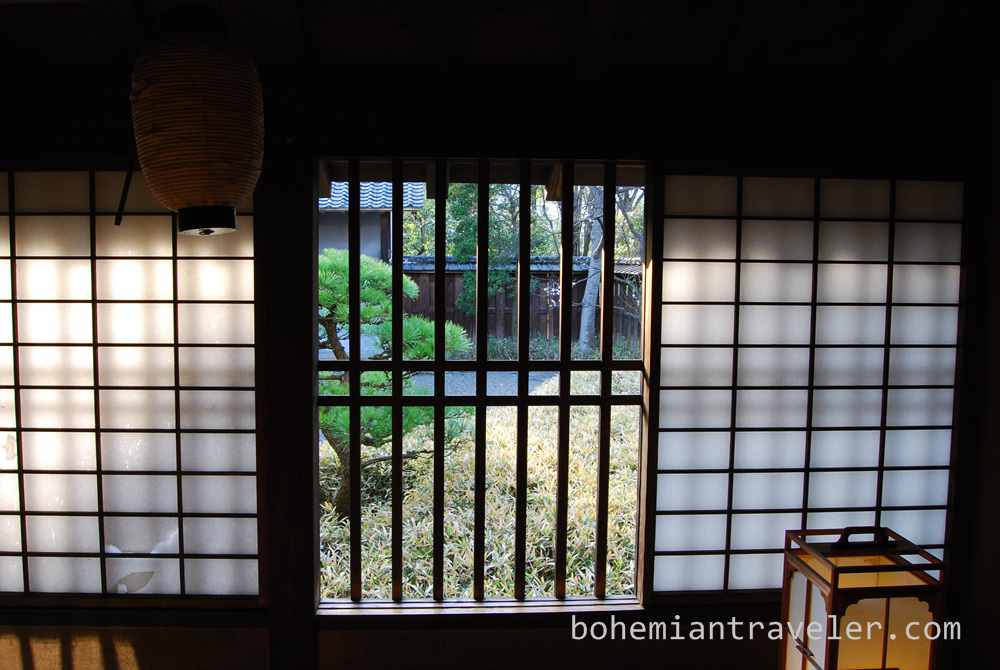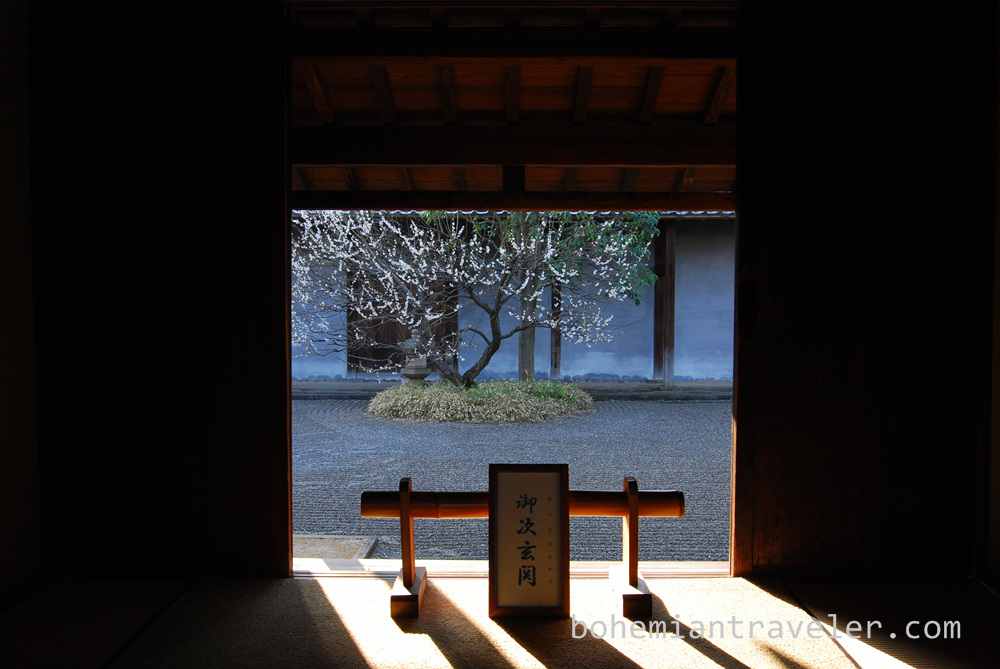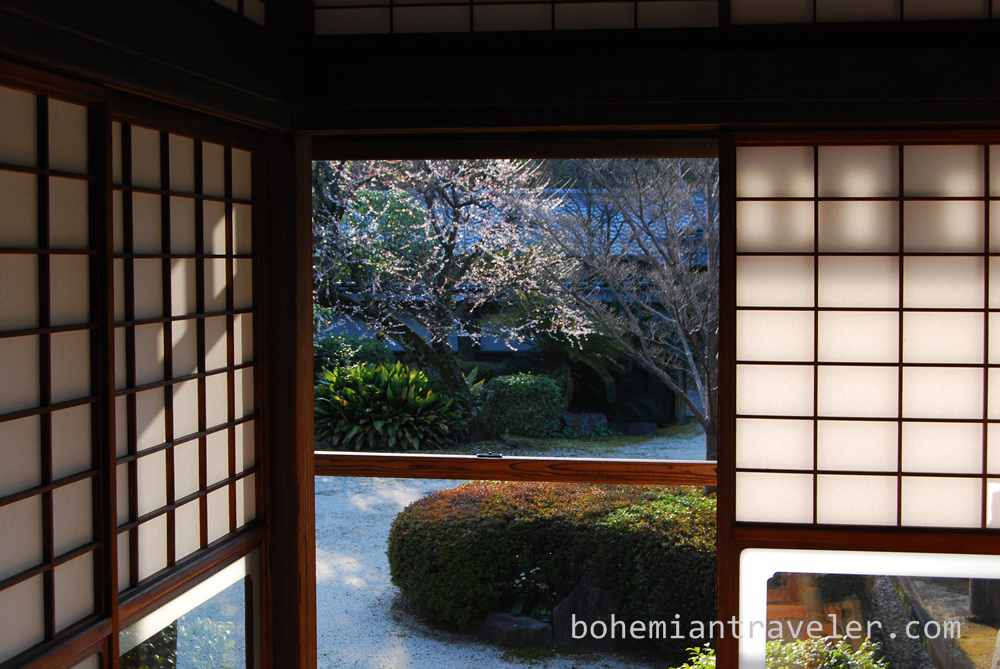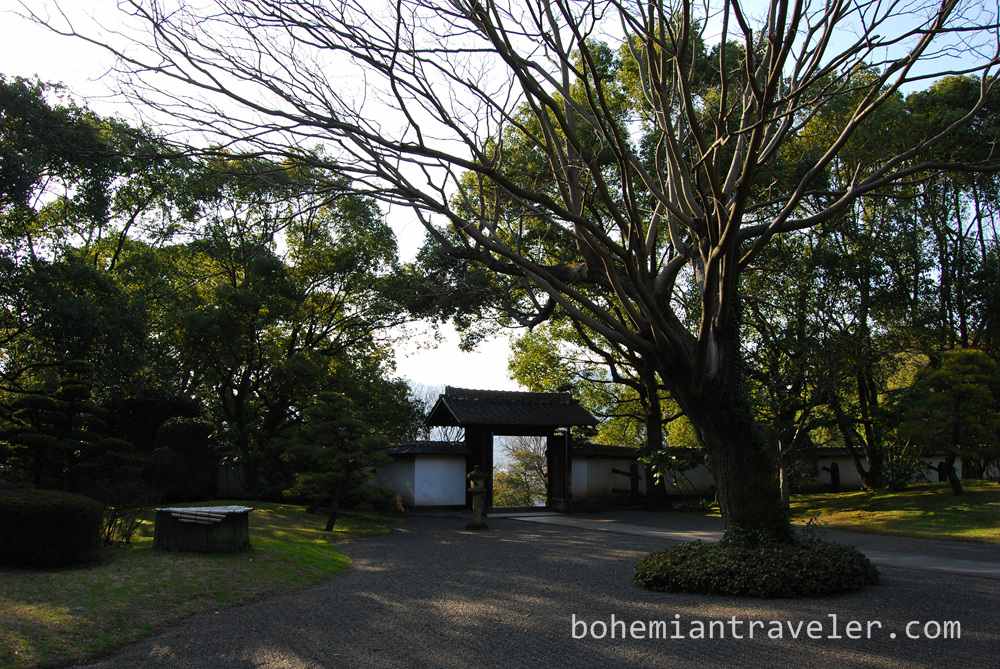Stopping in Kumamoto was a last-minute decision for me. It turned out to be a good one. The city was on the way from Fukuoka to Aso Caldera. I read about a few worthy sights and thought a night’s stop would be sensible.
I checked into my hostel after the two-hour bus ride. My dorm room was four partitioned sleeping spaces on a tatami mat—quite a bit different from my previous night in a capsule hotel—but an equally atmospheric experience.
The Former Residence of the Hosokowa Gyobutei
Soon after, I trekked over to the former residence of the Hosokawa Gyobutei—with its inspiring layout of interconnected rooms. I probably spent an hour walking through the house trying to capture the way the light slid through each window and lit up the wooden beams and tatami floors. The house belonged to a high-ranking samurai and is set in traditional gardens. It’s one of only a few buildings of its kind in Japan.
Kumamoto Castle
I headed next to Kumamoto Castle. The sun was moving even closer to the horizon and the castle was glowing stronger with every minute. The third largest castle in Japan rises up dramatically from the center of Kumamoto City. Completed in 1607, it went through a major overhaul in 1960. So much was restored that the concrete interior of the castle was a disappointment. It wasn’t too worrying because the outside was so impressive. Anyhow, the view over the city is an excellent one after climbing the stairs inside the castle.
Photos of Kumamoto Castle:
Photos of the former residence of the Hosokawa Gyobutei:
More info:
Kumamoto is located south of Fukuoka on Japan’s Kyushu Island on the way Kagoshima. It is a city of 750,000. Besides the castle and residence of Hosokawa Gyobutei, the Suizenji Park, dating from 1632, is worth a visit. Kumamoto is a pleasant stop on Kyushu without much tourist traffic. I stayed at the Nakashimaya Hostel, which was friendly, comfortable, and had a sleek-looking traditional interior.
